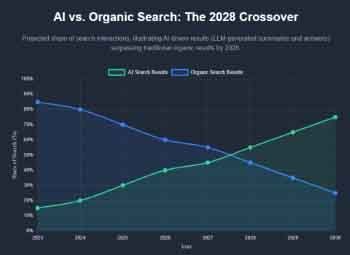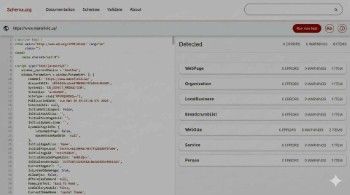We got it.
Thank you for contacting us.We’ll get back to you as soon as possible.
How to Get Shortlisted as an Oil & Gas Subcontractor
By Doug Mansfield • 9 November 2025

Why You Aren't Receiving the RFQ
After consulting with hundreds of business owners here in Houston, I've seen a recurring pattern, especially in the oil and gas sector. Whether you're providing highly specialized products or essential field services, you share a common, frustrating challenge: how to win the opportunity to bid on, or even receive an RFP or RFQ from a prime contractor.
The Industrial Sector’s Gatekeeping Problem
You know you can do the work, but you're stuck outside the "club," unable to get your foot in the door.
We're talking about a wide range of businesses that keep the energy sector moving. A range I broadly refer to as the industrial sector. You might fit into one of these categories as an example:
- Pipeline construction and fabrication
- Modular fabrication and process skids
- Drilling contractors
- Well construction and completion services
- Downhole intervention systems
- Engineering and operations supervision
- Heavy civil and industrial construction
- Maintenance and turnaround services
- Gas processing facility services
- Crude oil and chemical storage terminal services
The challenge is that procurement managers at prime contractors are tasked with fulfilling project needs, and their default path is often the one of least resistance.
How Prime Contractors Find You (and How They Don't)
Let's start by acknowledging the challenging reality: a significant share of this business may be awarded based on pre-existing and long-standing business relationships. For a newcomer, these relationships can be very difficult to break.
But here in 2025, that's not the full story. Prime contractors are under constant pressure to find better value, mitigate risk, and improve efficiency. They are actively revisiting their existing lists to seek out new subcontractors who can provide equal or greater value and—critically—can prove their reliability.
Like many other B2B service seekers, they've found that targeted internet searches and professional communities like LinkedIn can uncover new potential candidates more effectively than in previous years.
When a prime contractor’s procurement manager or engineer entertains bringing in new talent, they are evaluating you on a very specific set of attributes. They are risk-averse, and their checklist often includes:
- Impeccable safety record (e.g., TRIR, EMR)
- Proven reliability and on-time performance
- Deep, specific experience in the required service or application
- Technical certifications (ISO, API, etc.)
- Financial stability
- A qualified and stable workforce
- Ability to meet compliance and insurance requirements
- Understanding of the demanding O&G environment
The "Managed" Path vs. The "Proactive" Path
To de-risk this search, personnel tasked with finding subcontractors often turn to established workforce providers that service the oil and gas industry. These services pre-screen candidates for many of the attributes listed above. You may recognize names like:
- Bedrock
- Frontline Source Group
- NES Fircroft
- Clayton Services
- Primary Services
- Brunel
However, this doesn't mean you can't stand out and win the opportunity. This is your chance to hone your
industrial marketing skills. Risk aversion is so high that even when a candidate is presented by a trusted workforce provider, there is a high probability that the procurement manager will independently research that candidate to vet them.
They are going to Google you. They are going to look at your website and LinkedIn page.
This is your moment to make their jobs easier and stand apart from the crowd. This is where your digital
Foundation —the first component of our
FADA® Marketing Framework—does the heavy lifting. If visitors to your website and social platforms can't find the data they seek, you'll be passed over for an option that feels safer.
Building Your "Shortlistable" Digital Foundation
Your goal is to replace sales jargon with credible, verifiable facts. This isn't about "flashy" design; it's about building credibility. Here are the steps we take to help our industrial clients achieve this.
- Look the Part: You must have a polished brand. This means a professional website with a professional logo, backed by clear messaging that shows you have years of real experience. If your website looks like it was built in 2005, it signals a lack of investment and attention to detail—a major red flag.
- Make Your Proof Easy to Find: A procurement manager is not there to read your marketing slogans. They are on a fact-finding mission. Your website must be engineered as a sales tool that answers their specific questions. We recommend dedicating clear, easy-to-find sections or pages for:
- Safety: Don't just say "we're safe." Show it. Prominently display your TRIR and EMR scores, safety certifications, and a summary of your safety program.
- Certifications: Create a library of your key certifications (e.g., ISO, API, etc.) so they can be easily verified.
- Services & Equipment: Have detailed pages for your core services and list your key capital equipment. This proves your capability to perform the work.
- Key Personnel: Briefly profile your leadership and project management team to showcase their decades of experience in the industry.
- Showcase Your Project Portfolio (Even with NDAs): This is where you add real value. A project portfolio with details of work accomplished is invaluable. We know this is difficult in a world of restrictive terms and NDAs that prevent sharing project names or photos. But that doesn't mean you can't meet this challenge with thoughtful planning.
Instead of naming the client, create a "case study" that says:
"Partnered with a major midstream operator in the Permian Basin to fabricate and install 12 multi-stage process skids, delivering the project 2 weeks ahead of schedule and with zero recordable incidents."
This one sentence proves your experience, capability, location, and safety record without violating an NDA.
Final Thoughts
The world of oil and gas subcontracting is already structured with services designed to make the job of prime contractors easier. That does not mean you should accept a passive approach and simply hope you get found.
You should be be proactive. Take the steps to build a strong digital foundation that is loaded with the proof, facts, and credibility a procurement manager is looking for. Make their decision to shortlist you easy, safe, and a logical choice.
My name is Doug Mansfield and this is what I do for a living. If you ever find yourself considering delegating this work to a qualified agency, then I would be pleased to be shortlisted. Simply
schedule a consultation with me to determine if Mansfield Marketing is a good fit.
This blog post was written by the founder of Mansfield Marketing, Doug Mansfield.
Latest Posts














